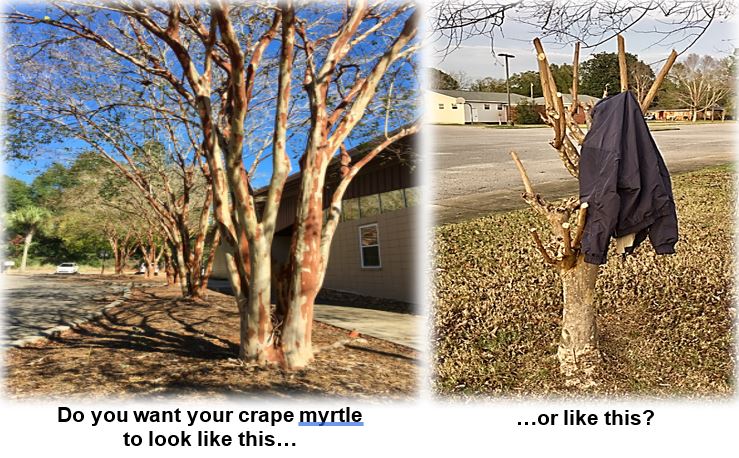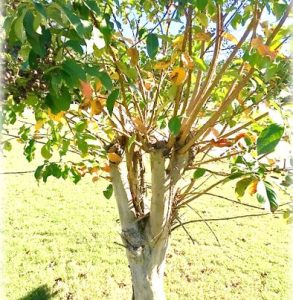You’ve probably seen crape myrtle trees pruned to look like a coat rack. Hopefully, you’re not guilty of doing this. The term “crape murder” was coined to describe this drastic topping of crape myrtles.
Properly selected and correctly placed crape myrtles need little pruning.

A crape myrtle that requires routine pruning to force it to fit in a smaller space should be considered for replacement. To avoid having to annually “butcher” a nice tree, choose a smaller maturing crape myrtle or a more appropriate plant in size for that location. Plants are genetically designed to be a certain size in height and width. They will attempt to regrow to their designed size, again and again… and require pruning, again and again… and the pruned debris needs to be picked up and disposed of, again and again. This cycle results in a relatively low maintenance plant becoming a high maintenance plant.
There are crape myrtle cultivars that grow only two to three feet in height such as ‘Pocomoke’. There are semi-dwarf cultivars that grow to about twelve feet or less in height such as ‘Acoma’ and intermediate crape myrtle cultivars such as ‘Osage’ that grow near thirty feet or less in height. But standard “tree form” cultivars such as ‘Natchez’ may reach heights of thirty feet or greater.

Topping trees is a bad practice. It weakens a tree by removing food reserves stored in the now removed wood. It radically reduces the size of the

canopy, decreasing the plant’s ability to produce food through photosynthesis. The large open cuts caused from topping invite wood-rotting organisms and ultimately decay. Topping results in dead stubs throughout the tree. Topping a crape myrtle forces the tree to produce unsightly root suckers. Ultimately topping results in an ugly, odd-looking, higher maintenance, out of balance (much reduced canopy but same root system) and short-lived crape myrtle.
Some people believe crape myrtles must be cut way back in order to produce an abundance of blooms. Flower clusters might be slightly larger on topped trees but topping usually delays flowering up to one month. And since the tree is smaller, it produces fewer total flowers.
The long, weak shoots supporting large, heavy flower clusters on topped crape myrtles bend awkwardly and are more likely to break away from the plant.
When pruning crape myrtle trees, avoid cutting back or shortening branches much larger than the diameter of your finger, although cutting larger branches back to a side branch or to the trunk when needed is fine.
More information on crape myrtles and pruning is available from the UF/IFAS Extension Office in your county or online at: https://edis.ifas.ufl.edu/topics/crapemyrtle.
 2
2
